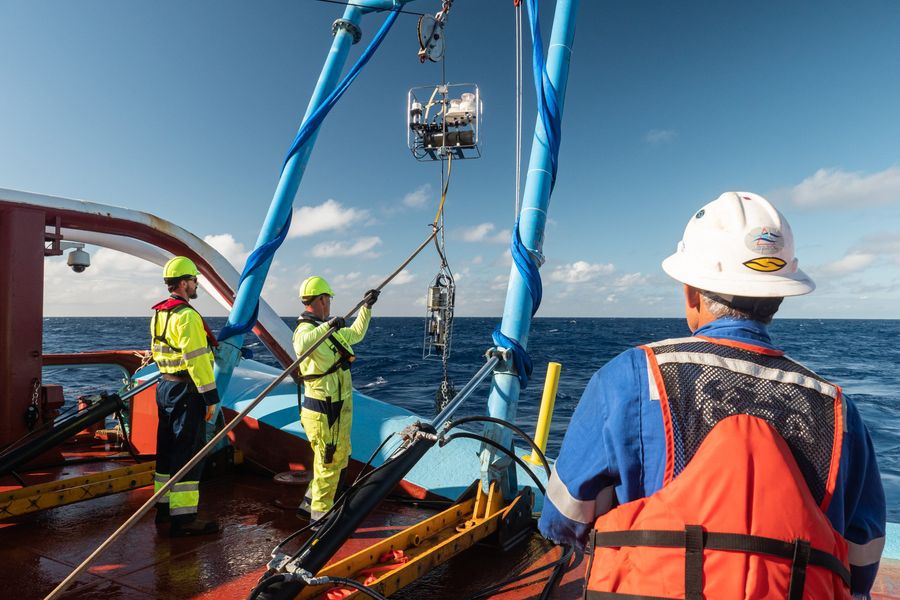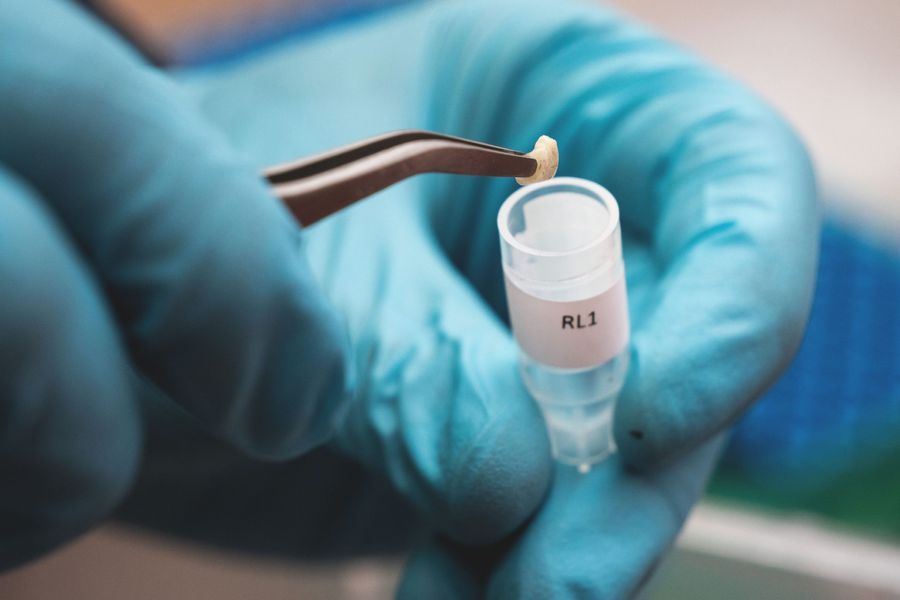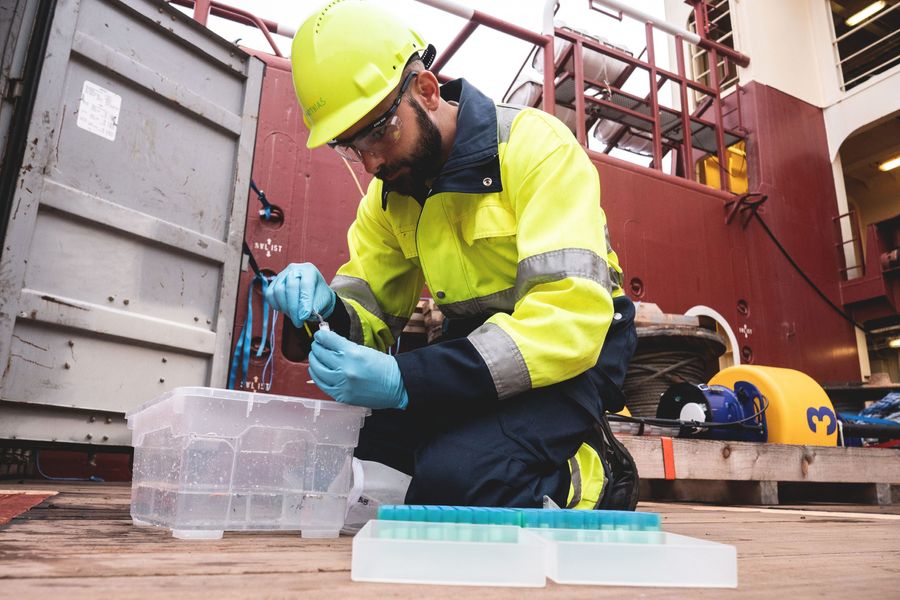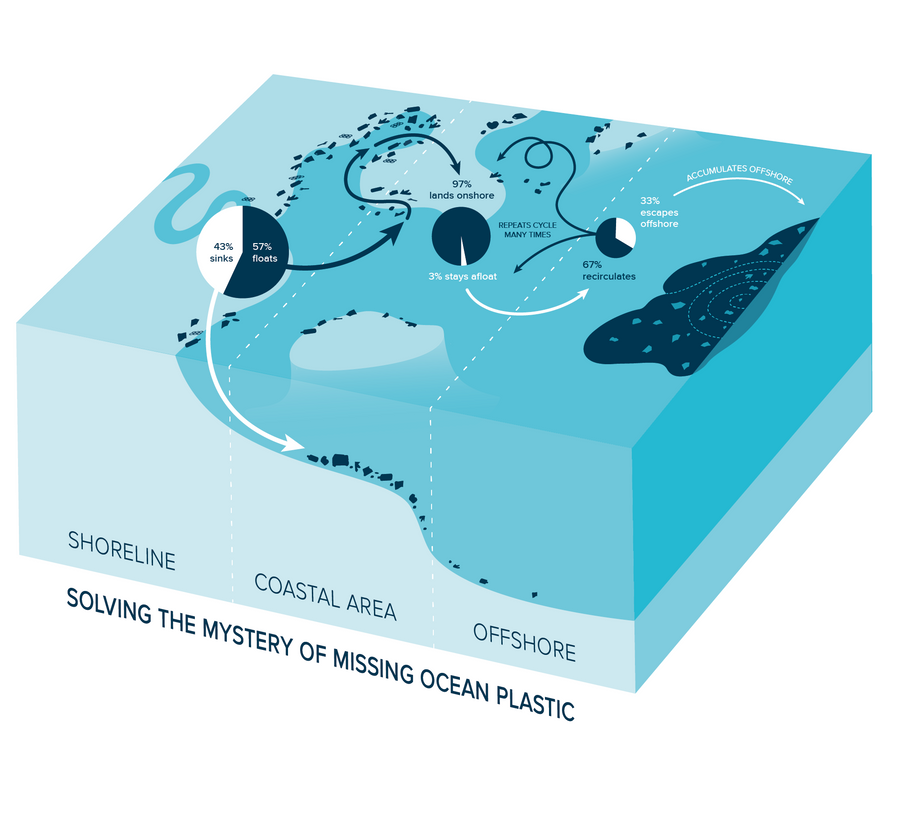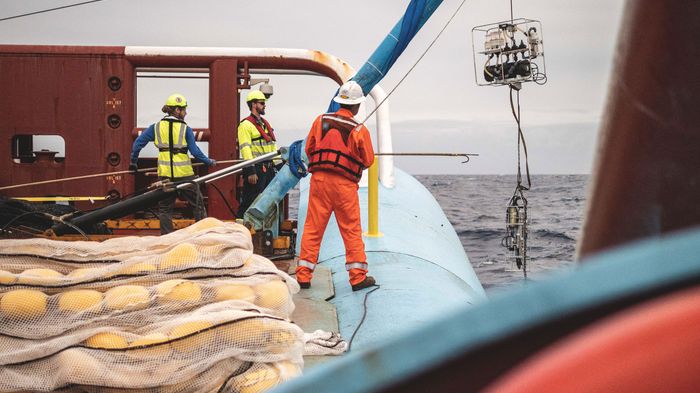
Great Pacific Garbage Patch Slowly Breaks Down Into Microplastics to Pollute the Deep Sea
Back to updates- Plastics in the surface waters of the Great Pacific Garbage Patch break down into microplastics that sink down into the deep sea.
- First results indicate that the majority (about 90%) of the plastic mass in the Great Pacific Garbage Patch is located in the top 5 m of the upper 2000 m of the water column we sampled; most debris is still found at the surface.
- If not intervened by cleanup of the plastic pollution that is already present, plastic fallout will likely increase contamination of the deep sea below ocean garbage patches, where cleanup is even more difficult, if not impossible.
In our mission to rid the world’s oceans of plastic, we rely on a thorough understanding of the ocean plastic pollution problem. To this end, our earlier studies of the Great Pacific Garbage Patch have found that the plastic afloat in the ocean garbage patches is rapidly increasing and seems highly persistent. In our new study, ”First evidence of plastic fallout from the North Pacific Garbage Patch”, published today in Scientific Reports, we show that part of the plastic debris floating in the North Pacific Garbage Patch (commonly known as the Great Pacific Garbage Patch, or GPGP) is lost to the underlying deep-sea through the fallout of once-buoyant microplastics .
Behind the scenes: plastic fallout research
Over the past two years, we have been studying plastic distribution underneath the Great Pacific Garbage Patch. Keep an eye out, as our results will be published this Wednesday.
Posted by The Ocean Cleanup on Monday, May 4, 2020
Until today, studies on plastic pollution in the Great Pacific Garbage Patch have mainly focused on plastic debris afloat at the sea surface. The deployment and monitoring phase of The Ocean Cleanup’s System 001 (“Wilson”) in 2018 provided our researchers with the rare opportunity to dive deeper into the water column and study the vertical extent of plastic pollution in the region. To do so, The Ocean Cleanup’s monitoring vessel, the Maersk Transporter, was equipped with scientific equipment that enabled our team to collect samples spanning from the ocean surface down to 2000 m water depth. The sampling equipment included.
In total, more than 12,000 plastic fragments larger than 0.5 mm in size were manually collected and analyzed. Many thanks to the Rotterdam Zoo for providing us with the facilities to conduct this analysis. The results revealed the quantity of plastic debris in the water column to increase with higher concentrations at the sea surface. Intriguingly, our researchers further discovered that the plastic fragments in the water column were mainly made of polyethylene and polypropylene; these positively buoyant polymers are also known to be the dominant types of plastic afloat in the GPGP. This observational evidence strongly suggests that there is a vertical transfer of microplastics from the GPGP into the deep sea below.
How these once buoyant microplastics are reaching deeper water layers has yet to be unraveled. Several sedimentation mechanisms have been proposed to date, such as changes in buoyancy because of biofouling (i.e. the colonization with bacteria, algae, and other marine organisms), incorporation into marine snow, and fecal pellets, as well as aggregation with suspended particles. The quantitative importance of these hypothesized vertical transport mechanisms, however, currently remains unknown.
Sedimentation of positively buoyant microplastics from the ocean surface is often used as a plausible explanation for the ‘missing plastic’ mystery, which refers to the great discrepancy between estimates of the amount of plastic entering the ocean and the amount drifting at the sea surface. Our new study provides first clues on the possible subsurface plastic mass reservoir in the GPGP. At the five study sites investigated by our researchers, roughly 90% of the plastic mass in the upper 2000 m of the water column was concentrated in the top 5 m. The remaining 10% were dispersed across water depths of 5-2000 m.
It is important to realize that these numbers represent, at best, a snapshot of the vertical distribution of the plastic mass during the days of sampling in late 2018. More data must be collected to evaluate how time and location affect plastic concentrations in the water column below the GPGP. Our researchers continue to collect more observational data spanning large spatial scales and considering temporal aspects. These measurements are essential to more reliably quantify the amount of plastic debris present in the water column below the GPGP and, more generally, in the global ocean.
Based on the data available to date, however, it seems unlikely that the water column of the GPGP harbors a major fraction of the tens of millions of metric tons of missing floating ocean plastic. Instead, the new results support our latest model results, which suggested that a large part of the missing positively buoyant plastic debris is likely stranded, circulating in coastal environments, and only slowly making its way to offshore waters.
The study presented today reveals that plastic pollution has already reached the remote deep-sea below the GPGP. How this pollution impacts the fragile and still largely undiscovered deep-sea ecosystem remains in the dark. The good news is that the data available to date shows that most of the plastic mass in the GPGP is still afloat in the surface ocean. Thus, it is still possible to minimize the impacts of plastic pollution on deep sea ecosystems underlying ocean garbage patches. Removal of floating plastic debris circulating in offshore accumulation zones will reduce the number of microplastics sinking into deeper water layers. Once sunk below the surface, cleanup of microplastics will be even more challenging, if not impossible.



